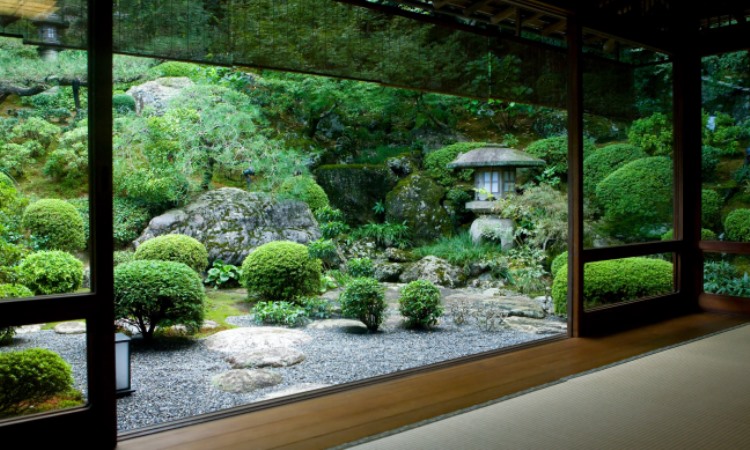Japanese culture is renowned and revered for their appreciation of nature and the natural world. Japanese landscapers and gardeners often use strikingly simplistic designs to showcase the magic, wonder and beauty of the natural world that surrounds us. Japanese garden design is an art and science that has been honed and perfected for centuries yet looks fresh, modern and new. You can use Japanese garden design ideas in your landscaping plan to bring a bit of the far east to your home. Creating a Japanese garden will allow you to express your creativity, get in touch with nature and will help you create a space where you can relax, decompress, unwind and enjoy the pleasures of nature every morning with a cup of coffee and every evening with a cup of tea or glass of wine.

Japanese garden design is deceptive in its simplicity. Entering a Japanese garden is a striking visual because of its sparsity and simplicity. On the polar opposite end of English gardens where many varieties of flowers, plants and colors vie for attention, Japanese gardens are an exercise of simplicity and control. Japanese garden design relies on shapes, flow of movement through the garden and strives to showcase the beauty of just a few key elements. Weeping maple trees surrounded by cleanly raked gravel and nestled between walking paths perfect for meditation walks are routinely incorporated in Japanese garden plans.
A Japanese garden often incorporates a sand garden as well. Sand gardens are planned spaces where clean, white sand is raked into labyrinth like patterns that not only create an eye pleasing design, but also offer the gardener an opportunity to meditate on the movement of sand, the motion of raking and the impermanent nature of the design they create. Taking a few moments to rake the sand and connect with nature can help gardeners release stress, calm anxieties and step away from the demands and pressures of every day life.
Another hallmark of Japanese garden design is the incorporation of stone or clay statues. Lanterns, temples, Buddhas and other symbolic statuary often grace Japanese gardens and create an eye pleasing design element and pay homage to Japanese culture. From a simple stone bench that provides a place to sit and enjoy the view to an elaborately carved temple, choosing a garden statue can help you create an interesting focal point in your garden as well as add texture and architectural design elements to your outdoor space.

Bonsai trees carefully shaped and cultivated are another traditional design element in Japanese gardens. Cultivating bonsai trees is an ancient Japanese art that requires patience, design and pruning skills. Bonsai trees are miniature representations of full size trees that have been cut, shaped and pruned to represent the beauty and majesty of enormous trees on a small scale that can be appreciated indoors or out.
There are lots of resources online and in print that can help you plan your Japanese garden and spark creative ideas you can incorporate into your garden to make it your own. Once you have the inspiration you need, make a visit to your local garden supply center and get expert advice and guidance on which materials, plants and trees will best meet your geographical and design plan needs. Once you have your Japanese garden planned and plotted, maintaining it can become a form of mediation and relaxation in your daily life. Bring a piece of Japanese culture and beauty to your home and life with Japanese garden design and you will understand why so many people find comfort and peace when they enter these sacred spaces.






